Grimpoteuthis tuftsi
Richard E. Young and Michael VecchioneIntroduction
G. tuftsi is known only from the type description which is based on seven specimens captured in bottom trawls during a study of the fauna of the continental slope and the Tufts and Cascadia Abyssal Plains in the Northeastern Pacific. The largest individual has a total length of 475 mm.
Characteristics
- Web
- Web formula variable, generally ABCDE.
- Web nodule at midpoint of each arm, ventral side.
- Web nodule near but not at end of web.
- On dorsal arm margin web extends nearly to arm tip.
- Suckers and cirri
- Arms I each with 63-75 suckers.
- Maximum sucker diameter 2.5 - 5.3% of ML.
- Suckers united by thin transparent web or membrane along oral surface of arms.
- First 6-7 suckers small, then gradually increase to maximum diameter at about level of nodule.
- Sexual dimorphism absent.
- First cirri between suckers 5-7.
- Cirri long, maximum length 1.5-3.5 x largest sucker diameter.
- Cirri extend to arm tip.
 Click on an image to view larger version & data in a new window
Click on an image to view larger version & data in a new window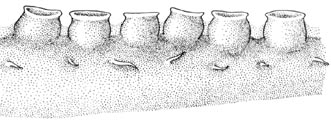
Figure. Lateral view of suckers and cirri of G. tuftsi, male, 93 mm ML. Note weak membrane between suckers. Drawing from Voss and Pearcy (1990).
 Click on an image to view larger version & data in a new window
Click on an image to view larger version & data in a new window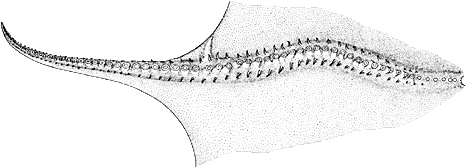
Figure. Oral view of left arm I of G. tuftsi, male, 93 mm ML. Drawing from Voss and Pearcy (1990).
- Shell
- U- or rounded V-shaped with a hint of central bend in saddle (i.e., weak W-shaped).
- Somewhat constricted at posterior end.
- Wings taper to thin, flat, straplike, truncated tips.
Comments
The above description is taken from Voss and Pearcy (1990). More details of the description of G. tuftsi can be found here.
G. tuftsi can be separated from all other members of the genus by the transverse groove in the outer surface of the shell saddle. This groove gives the shell a weak W-shape which is somewhat similar to but not as strong as in species of Luteuthis. Among other Pacific species, G. tuftsi differs from:
- G. abyssicola by features of the shell (presence of shoulder blades, transverse groove and non-expanded wings).
- G. bathynectes in having a transverse groove on the external surface of the shell saddle, no sexual dimorphism in sucker shape, more elongate gills, longer cirri, presence of enlarged suckers near web nodules and presence of a radula (Voss and Pearcy, 1990).
- G. hippocrepium in having a transverse groove on the external surface of the shell saddle and shell shoulder blades.
- G. innominata in having a transverse groove on the external surface of the shell saddle and no median ridge, more suckers (63-75 vs 50-60), longer cirri (1.5-3.5x vs 1x), and, possibly, a shorter gill (half-orange vs semi-sepioid vs).
- G. meangensis in having a transverse groove on the external surface of the shell saddle.
- G. pacifica in having more suckers (63-75 vs 52).
Nomenclature
O'Shea (1999) suggested that G. tuftsi might be a Luteuthis; however Collins (2003) after examining the holotype of G. tuftsi, concluded that this species should remain in Grimpoteuthis.
Distribution
L. tuftsi is known only from the Tufts Abyssal Plain off Oregon, USA. Type locality: 45°05.2'N, 134°43.4'W, 3900 m.
References
Collins, M. A. 2003. The genus Grimpoteuthis (Octopoda: Grimpoteuthidae) in the North-east Atlantic, with descriptions of three new species. Zool. Journ. Linnean Soc., 139: 93-127.
O'Shea, Steve. 1999. The Marine Fauna of New Zealand: Octopoda (Mollusca: Cephalopoda). NIWA Biodiversity Memoir 112: 280pp.
Voss, G. L. and W. G. Pearcy. 1990. Deep-water octopods (Mollusca: Cephalopoda) of the Northeastern Pacific. Proc. Calif. Acad. Sci. 47: 47-94.
About This Page

University of Hawaii, Honolulu, HI, USA

National Museum of Natural History, Washington, D. C. , USA
Page copyright © 2016 and
 Page: Tree of Life
Grimpoteuthis tuftsi .
Authored by
Richard E. Young and Michael Vecchione.
The TEXT of this page is licensed under the
Creative Commons Attribution-NonCommercial License - Version 3.0. Note that images and other media
featured on this page are each governed by their own license, and they may or may not be available
for reuse. Click on an image or a media link to access the media data window, which provides the
relevant licensing information. For the general terms and conditions of ToL material reuse and
redistribution, please see the Tree of Life Copyright
Policies.
Page: Tree of Life
Grimpoteuthis tuftsi .
Authored by
Richard E. Young and Michael Vecchione.
The TEXT of this page is licensed under the
Creative Commons Attribution-NonCommercial License - Version 3.0. Note that images and other media
featured on this page are each governed by their own license, and they may or may not be available
for reuse. Click on an image or a media link to access the media data window, which provides the
relevant licensing information. For the general terms and conditions of ToL material reuse and
redistribution, please see the Tree of Life Copyright
Policies.
- First online 13 May 2003
Citing this page:
Young, Richard E. and Michael Vecchione. 2003. Grimpoteuthis tuftsi . Version 13 May 2003 (under construction). http://tolweb.org/Grimpoteuthis_tuftsi/20128/2003.05.13 in The Tree of Life Web Project, http://tolweb.org/




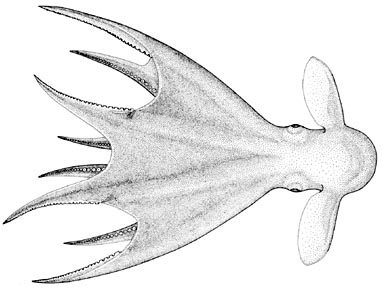
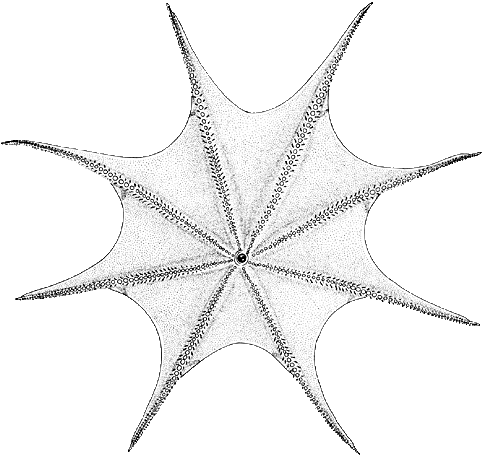

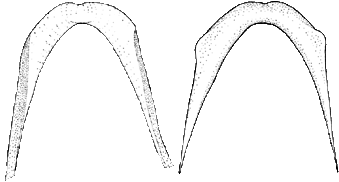
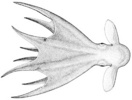


 Go to quick links
Go to quick search
Go to navigation for this section of the ToL site
Go to detailed links for the ToL site
Go to quick links
Go to quick search
Go to navigation for this section of the ToL site
Go to detailed links for the ToL site